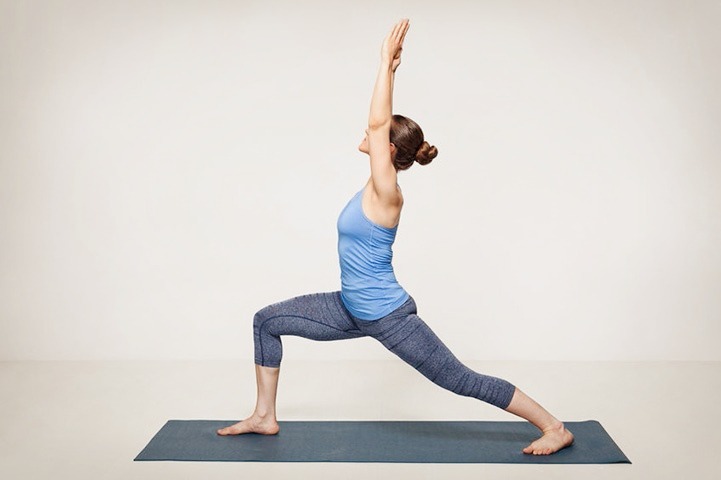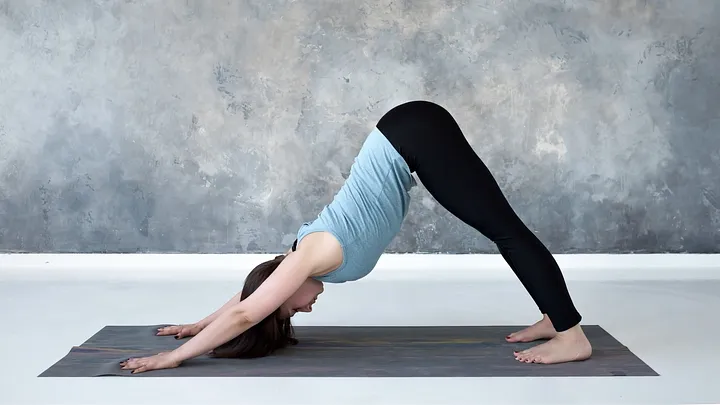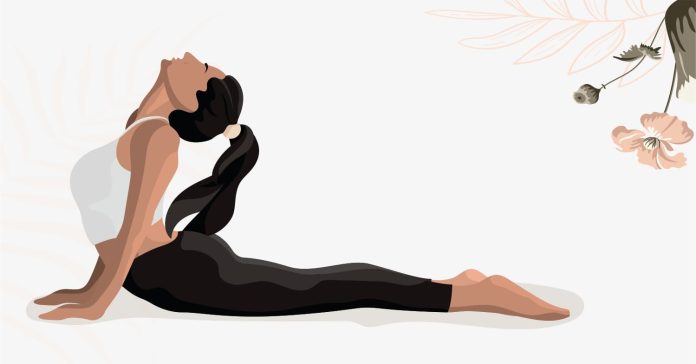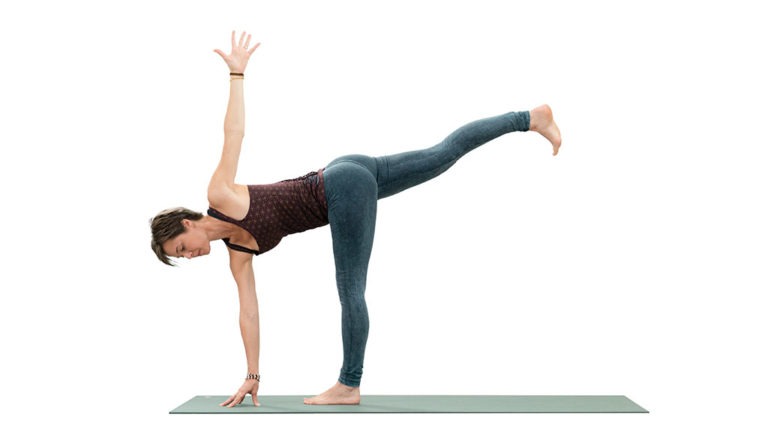10 Yoga Poses and Techniques to Strengthen Bones
Bone health is essential for maintaining overall physical well-being, especially as we age. Yoga is an effective way to strengthen bones, improve flexibility, and enhance balance. Incorporating specific yoga poses into your routine can help increase bone density and prevent conditions such as osteoporosis. Here are ten yoga poses and techniques to strengthen bones and support your skeletal system.
1. Tadasana (Mountain Pose)
The Mountain Pose is a foundational pose in yoga that promotes good posture and alignment. By practicing Tadasana, you engage your leg muscles and improve your balance, which is crucial for bone health.
- Stand with your feet together, arms at your sides.
- Distribute your weight evenly across both feet.
- Engage your thigh muscles, lifting the kneecaps.
- Lengthen your spine and lift your chest.
- Hold the pose for 30 seconds to 1 minute, breathing deeply.

Benefits of Tadasana
Tadasana not only strengthens the bones in your legs but also promotes a sense of grounding and stability. This pose helps in correcting posture, which is vital for maintaining bone health. By aligning the spine correctly, you reduce the risk of spinal compression fractures, common in individuals with low bone density.
Tips for Practicing Tadasana
- Focus on distributing your weight evenly across both feet to avoid unnecessary strain on your joints.
- Engage your core muscles to support your lower back and maintain balance.
- Practice deep breathing while holding the pose to enhance relaxation and focus.
2. Virabhadrasana I (Warrior I Pose)
Warrior I Pose is a powerful standing pose that strengthens the legs, hips, and arms. This pose also enhances balance and stability.
- Begin in Tadasana, then step your left foot back about 3-4 feet.
- Turn your left foot out at a 45-degree angle.
- Bend your right knee over your right ankle.
- Raise your arms overhead, palms facing each other.
- Hold for 30 seconds to 1 minute, then switch sides.

Benefits of Virabhadrasana I
Warrior I Pose is excellent for building strength in the legs and hips, which are critical areas for maintaining bone density. This pose also stretches the chest and lungs, improving respiratory function. The engagement of the arms and shoulders helps in increasing bone density in the upper body.
Tips for Practicing Virabhadrasana I
- Ensure your front knee is aligned with your ankle to prevent strain on the knee joint.
- Keep your back leg strong and straight to maximize the benefits for your hips and legs.
- Reach up through your fingertips to engage your shoulders and upper back.
3. Utthita Trikonasana (Extended Triangle Pose)
The Extended Triangle Pose stretches the sides of the body and strengthens the legs. It also improves balance and stability.
- Stand with your feet about 4 feet apart.
- Turn your right foot out 90 degrees and your left foot slightly in.
- Extend your arms parallel to the floor.
- Reach your right hand forward and lower it to your shin, ankle, or the floor.
- Stretch your left arm toward the ceiling.
- Hold for 30 seconds to 1 minute, then switch sides.
Benefits of Utthita Trikonasana
Utthita Trikonasana is beneficial for stretching the spine, opening the hips, and strengthening the legs. This pose also improves digestion and reduces stress. By engaging multiple muscle groups, it helps in maintaining bone health and preventing fractures.
Tips for Practicing Utthita Trikonasana
- Focus on lengthening your spine rather than reaching your hand to the floor.
- Keep your chest open and gaze up at your top hand to maintain proper alignment.
- Use a yoga block if needed to support your bottom hand and ensure proper alignment.
4. Adho Mukha Svanasana (Downward-Facing Dog Pose)
Downward-Facing Dog is a full-body stretch that strengthens the arms, legs, and spine. This pose also improves bone density in the upper body.
- Start on your hands and knees, with wrists under shoulders and knees under hips.
- Lift your hips up and back, straightening your legs.
- Press your heels toward the floor.
- Spread your fingers wide and press firmly into the mat.
- Hold for 1-3 minutes, breathing deeply.

Benefits of Adho Mukha Svanasana
Downward-Facing Dog Pose stretches and strengthens the entire body. It particularly benefits the arms, shoulders, and spine, enhancing bone density and preventing conditions like osteoporosis. This pose also improves circulation and calms the mind.
Tips for Practicing Adho Mukha Svanasana
- Keep your knees slightly bent if you have tight hamstrings to avoid straining your lower back.
- Press firmly through your hands to engage your arms and shoulders.
- Focus on lengthening your spine and lifting your hips toward the ceiling.
5. Utkatasana (Chair Pose)
The Chair Pose strengthens the thighs, hips, and spine, making it an excellent pose for bone health.
- Stand with your feet together.
- Bend your knees and lower your hips as if sitting in a chair.
- Raise your arms overhead, keeping your chest lifted.
- Hold for 30 seconds to 1 minute, breathing deeply.

Benefits of Utkatasana
Utkatasana builds strength in the lower body, which is essential for maintaining bone density in the legs and hips. This pose also engages the core muscles, supporting the spine and improving overall posture.
Tips for Practicing Utkatasana
- Keep your weight in your heels to avoid putting too much pressure on your knees.
- Engage your core muscles to support your lower back.
- Reach up through your fingertips to lengthen your spine and lift your chest.
6. Setu Bandhasana (Bridge Pose)
The Bridge Pose strengthens the spine, hips, and legs. It also opens the chest and improves flexibility.
- Lie on your back with your knees bent and feet flat on the floor.
- Place your arms at your sides, palms facing down.
- Press into your feet and lift your hips toward the ceiling.
- Clasp your hands under your back and press your arms into the floor.
- Hold for 30 seconds to 1 minute, breathing deeply.

Benefits of Setu Bandhasana
Setu Bandhasana is excellent for strengthening the spine and improving flexibility in the back and hips. This pose also stretches the chest and shoulders, improving respiratory function and promoting relaxation.
Tips for Practicing Setu Bandhasana
- Engage your glutes and hamstrings to lift your hips higher and support your lower back.
- Keep your knees aligned with your hips to avoid straining your lower back.
- Focus on opening your chest and breathing deeply to enhance relaxation.
7. Bhujangasana (Cobra Pose)
Cobra Pose strengthens the spine and opens the chest. This pose is beneficial for bone health and improves flexibility in the back.
- Lie on your stomach with your hands under your shoulders.
- Press into your hands and lift your chest off the floor.
- Keep your elbows close to your sides and your shoulders relaxed.
- Hold for 30 seconds to 1 minute, breathing deeply.

Benefits of Bhujangasana
Bhujangasana strengthens the spine, improving bone density in the vertebrae. This pose also stretches the chest, shoulders, and abdomen, enhancing flexibility and respiratory function.
Tips for Practicing Bhujangasana
- Keep your lower back engaged to avoid straining your lumbar spine.
- Press evenly through your hands to lift your chest higher and open your shoulders.
- Focus on lengthening your spine and breathing deeply to enhance relaxation.
8. Vrksasana (Tree Pose)
Tree Pose is a balancing pose that strengthens the legs and improves focus and concentration.
- Stand with your feet together.
- Shift your weight onto your left foot and lift your right foot to rest on your inner left thigh or calf.
- Press your hands together in front of your chest or raise them overhead.
- Hold for 30 seconds to 1 minute, then switch sides.

Benefits of Vrksasana
Vrksasana improves balance and stability, strengthening the bones in the legs and hips. This pose also enhances concentration and focus, promoting mental clarity and relaxation.
Tips for Practicing Vrksasana
- Focus on a fixed point in front of you to maintain your balance.
- Engage your core muscles to support your lower back and maintain stability.
- Press your foot firmly into your thigh or calf to create a stable base.
9. Ardha Chandrasana (Half Moon Pose)
Half Moon Pose strengthens the legs and improves balance. This pose also stretches the groins, hamstrings, and calves.
- Start in Triangle Pose with your right leg forward.
- Bend your right knee and place your right hand on the floor or a block.
- Lift your left leg parallel to the floor, keeping your left hand on your hip.
- Open your chest and lift your left arm toward the ceiling.
- Hold for 30 seconds to 1 minute, then switch sides.

Benefits of Ardha Chandrasana
Ardha Chandrasana enhances balance, coordination, and strength in the legs and spine. This pose also stretches the groins, hamstrings, and calves, improving flexibility. Strengthening these areas supports bone health and reduces the risk of fractures.
Tips for Practicing Ardha Chandrasana
- Use a yoga block under your bottom hand to maintain proper alignment.
- Keep your top hip open and your chest lifted to avoid collapsing into the pose.
- Focus on engaging your core to support your balance and stability.
10. Savasana (Corpse Pose)
Savasana is a relaxation pose that allows your body to integrate the benefits of your practice. While it may not directly strengthen bones, it is crucial for overall health and well-being.
- Lie on your back with your legs extended and arms at your sides.
- Close your eyes and relax your entire body.
- Stay in the pose for 5-10 minutes, breathing naturally.
:max_bytes(150000):strip_icc()/savasanah_justlaying-5c547a3546e0fb00012b9e25.jpg)
Benefits of Savasana
Savasana promotes relaxation and reduces stress, which are essential for overall health. This pose allows your body to integrate the physical and mental benefits of your yoga practice. Reducing stress is particularly important for bone health, as chronic stress can lead to increased levels of cortisol, a hormone that can decrease bone density.
Tips for Practicing Savasana
- Use props such as blankets or bolsters to support your body and enhance relaxation.
- Focus on your breath and let go of any tension in your body.
- Stay in the pose for at least 5 minutes to fully experience its benefits.
Conclusion
Incorporating these yoga poses and techniques into your regular practice can significantly contribute to bone strength and overall health. Yoga not only helps in improving bone density but also enhances balance, flexibility, and mental well-being. By consistently practicing these poses, you can support your skeletal system and maintain a healthy, active lifestyle.
Additional Tips for Bone Health
- Nutrition: Ensure you are consuming a balanced diet rich in calcium, vitamin D, and other essential nutrients for bone health. Foods such as leafy greens, dairy products, and fortified cereals can help provide the necessary nutrients.
- Weight-Bearing Exercises: In addition to yoga, incorporate weight-bearing exercises such as walking, jogging, and resistance training into your routine to further enhance bone density.
- Sun Exposure: Spend time outdoors to get adequate sunlight exposure, which helps your body produce vitamin D, essential for calcium absorption and bone health.
- Avoid Smoking and Excessive Alcohol Consumption: These habits can negatively impact bone density and overall health. Reducing or eliminating them can contribute to better bone health.
By combining these yoga poses with a healthy lifestyle, you can effectively support your bone health and overall well-being. Remember to listen to your body and practice regularly to experience the full benefits of yoga.
